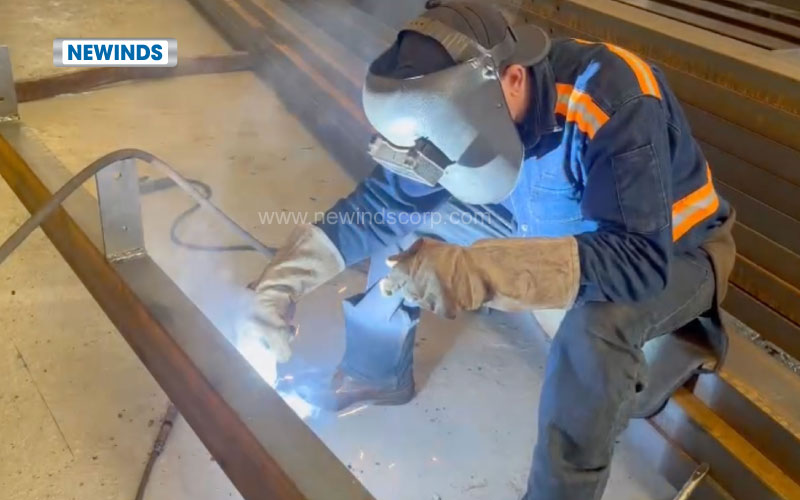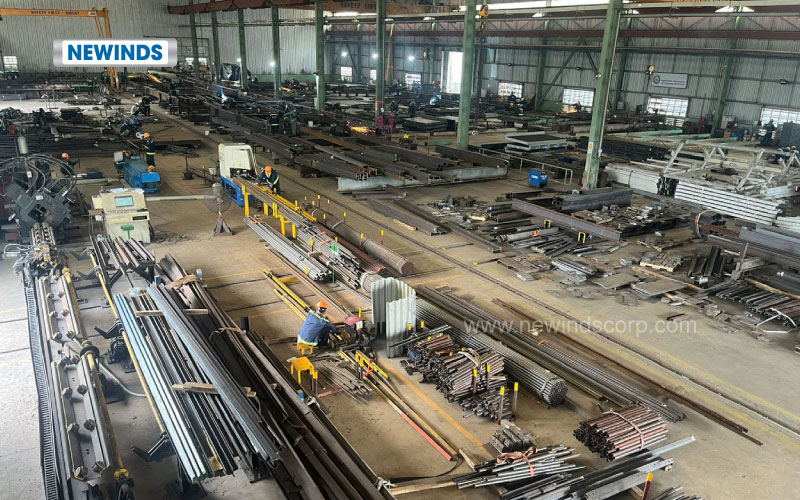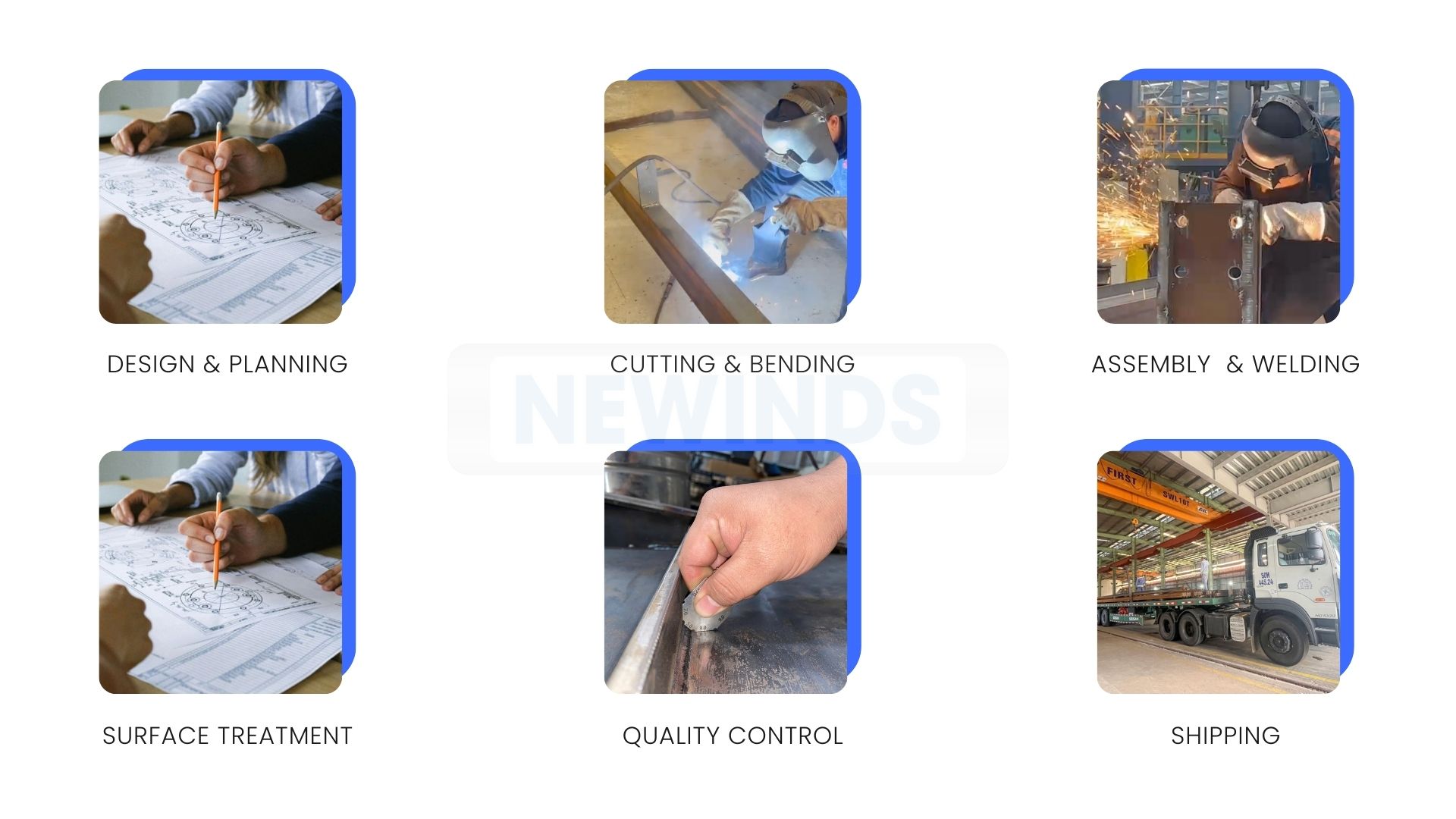Steel fabrication has become a cornerstone of modern construction, driven by the growing demand for sustainable and efficient building solutions. In this article, we’ll explore what it is, its key advantages, and the process that ensures strength and reliability in every project.
What is Steel Fabrication?
Steel fabrication is the process of turning raw steel into functional structures or parts through techniques such as cutting, bending, welding, and assembling. Simply put, it means shaping steel into the exact shape required for a project, from structural steel to large-scale structures.

Steel Fabrication Process
-
Design & Planning
Engineers create detailed 2D drawings to define specifications, structural components, and anticipate possible errors and risks during fabrication and installation. CAD software is then used to ensure design accuracy.
-
Cutting & Bending
Using CNC machines, plasma cutters, saws or lasers to cut, drill steel to achieve high precision. Then using hydraulic presses to bend or roll sections to achieve the desired shape.
-
Assembly & Welding
Before the final joining, the profiled steel panels are temporarily assembled and fixed. Components are welded using techniques such as MMA or MAG, manually or by machine, under close supervision to ensure durability.
-
Surface Treatment
Steel structures are coated with protective layers such as galvanizing or painting to prevent corrosion and prolong its service life.
-
Quality Control
At every stage, strict inspection ensures that the steel structures meet the required standards and specifications before being delivered to the construction site.
-
Transportation
Provides end-to-end custom metal solutions, supporting customers from design and prototyping to manufacturing and delivery. All steps are managed according to AS/NZS, US, and EU standards, ensuring products are delivered on time, of top quality, and tailored to each customer’s needs.
Comparison Of Steel Materials
| Type of Steel | Main Composition / Elements | Key Properties | Applications |
| Carbon Steel | Iron + up to 2% carbon | Strong, flexible, versatile, inexpensive, and produced in large quantities. | Framing, steel structure, structural components. |
| Stainless Steel | Iron + ≥10.5% chromium + <1.2% carbon | High corrosion and rust resistance, durable, aesthetically pleasing, and withstands harsh conditions. | Outdoor projects, chemical environments, decorative steel components. |
| Tool Steel | Iron + higher carbon + alloying elements | Withstands high temperatures and stress, retains shape under heavy use, durable. | Cutting tools, drilling equipment, hand tools, and industrial applications. |
| Alloy Steel | Iron + alloying elements (nickel, copper, chromium, aluminum, etc.) | Improved strength, ductility, machinability, corrosion resistance; available in many grades. | High-strength structural uses, machinery parts, and wear-resistant applications. |
Key Benefits of Steel Fabrication in Building Construction
1. Strength and durability
Pre-engineered steel is renowned for its excellent strength-to-weight ratio, making it ideal for construction projects. It can withstand heavy loads, harsh weather conditions, and seismic activity. Unlike warping wood or cracking concrete, steel maintains structural integrity for decades, minimizing maintenance and ensuring long-term reliability.
2. Reduce construction time
One of the biggest benefits of pre-engineered steel is its ability to save time. Components are manufactured in a factory under strict quality control and delivered ready for installation. This method helps shorten construction times, reduce labor costs, and allow projects to be completed and put into operation sooner.
3. Optimize costs
While the initial cost of steel may be higher than other materials, its long-term cost savings make it a great choice. Prefabricated steel fabrication reduces material waste and labor costs on site, while steel’s durability reduces the need for repairs or replacements. Over the life of a building, these savings add up to a significant return on investment.
4. Design Flexibility
Steel is a versatile material that can be cut, bent, or welded into virtually any shape, giving architects and engineers more freedom to be creative. This flexibility is a major advantage of steel fabrication.
5. Sustainability
Sustainability is a major benefit of using steel. Steel is a highly recyclable material. Choosing steel allows investors to minimize costs by reusing which can be reused indefinitely, making steel one of the most environmentally friendly options. Choosing steel supports green building practices, while ensuring sustainable and environmentally friendly steel structures for the future….
Reliable Steel Fabricator from Viet Nam
Accompanying Newinds – a custom metal fabricator that offers steel components, structural steel, sheet metal, stainless steel, steel sheds & buildings, handrails & staircases, and more. Along with strict quality supervision according to international standards ASTM, AS/NZS, EN, etc.

We have more than 17 years of experience providing steel processing services to customers worldwide such as Australia, USA, EU… We offer a wide range of metal fabrication services, flexibly customized to your project’s technical requirements, including:
· STRUCTURAL STEEL
· SHEET METAL FABRICATION
· STEEL SHEDS & BUILDINGS
· HANDRAILS AND STAIRCASES
· STAINLESS STEEL FABRICATION
· THREADED RODS & STUDS
· OTHER FABRICATION SERVICES
· VALUE-ADDED SERVICES
If you’re looking for a reliable steel fabricator with deep industry expertise and competitive pricing, we would be delighted to explore how we can fulfill your needs.
Contact Newinds:
Email: sales@newindscorp.com
Phone/Whatsapp/Zalo: Ann Yen +84 868 482 038
